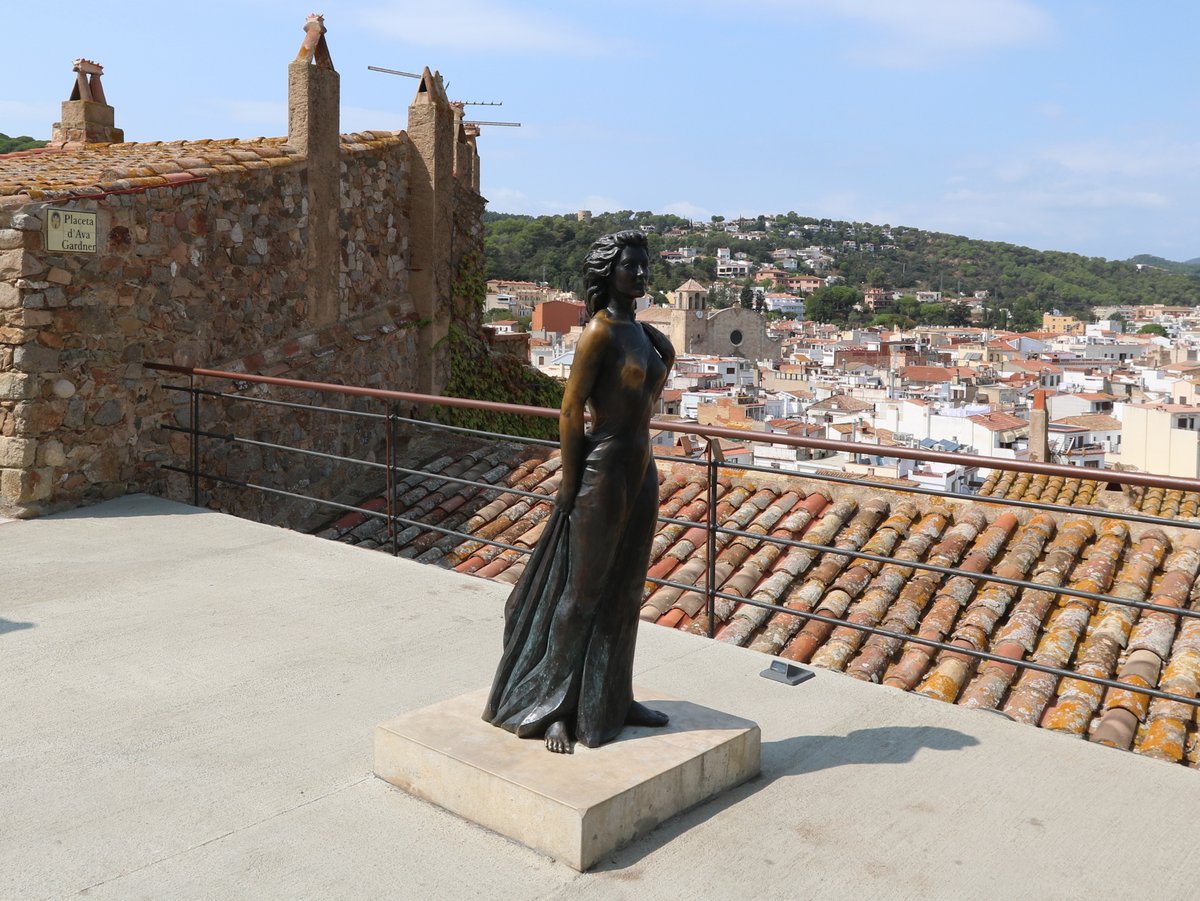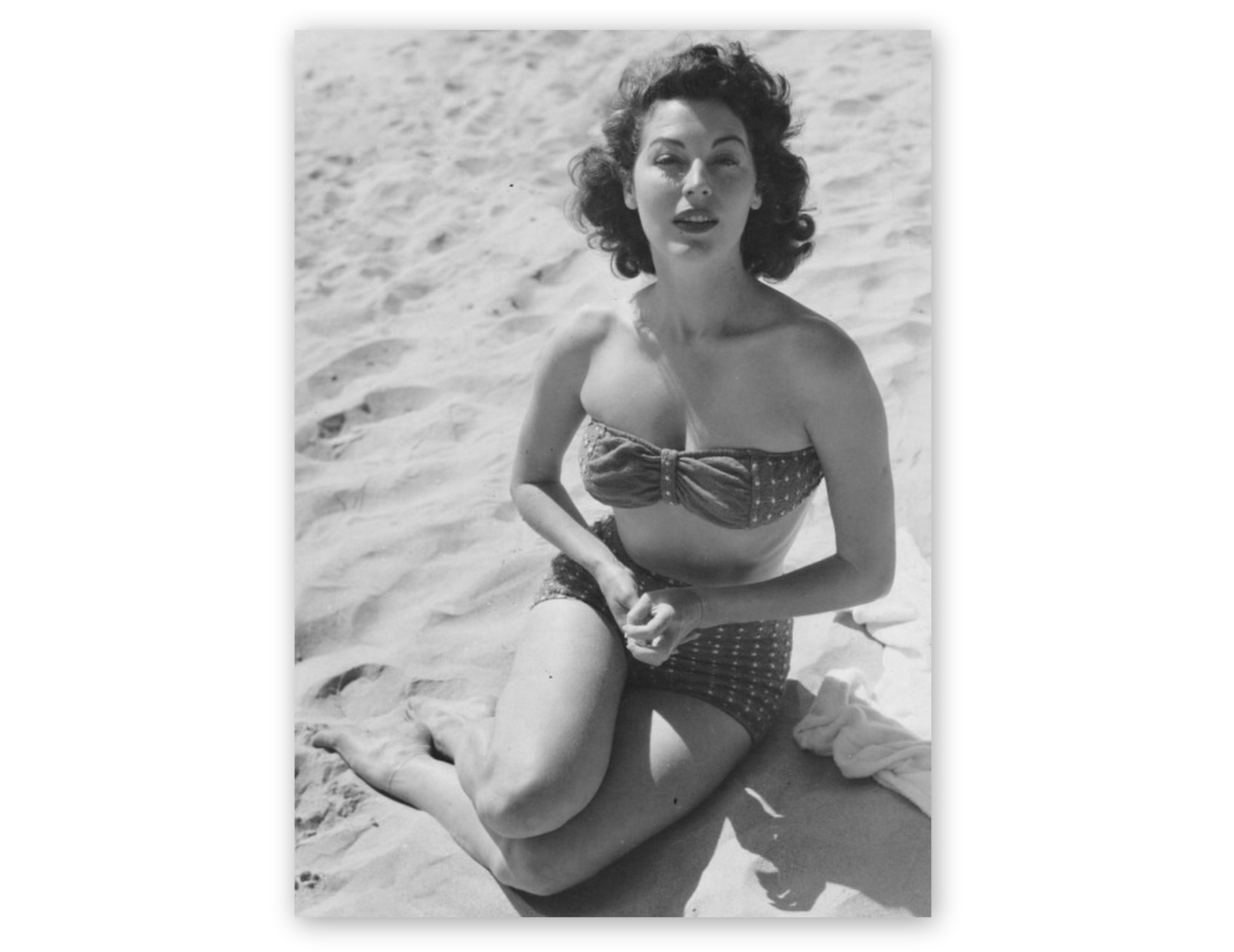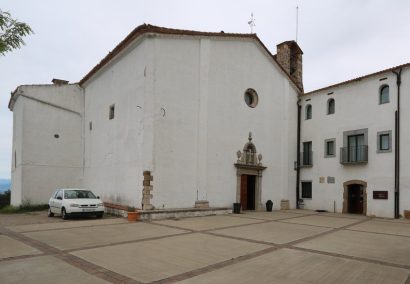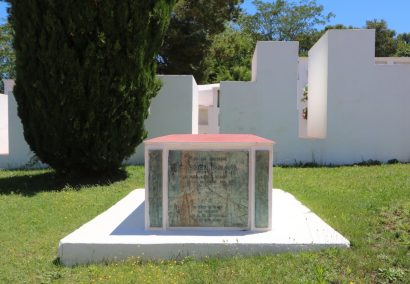Many a Hollywood star from the golden age of film have visited the Costa Brava resorts in the last century. Yet, few have left behind a legacy that goes beyond a commemorative plaque in a restaurant or a vintage photo at a local museum. The incomparable Ava Gardner is one exception.
In 1950, Metro-Goldwyn-Mayer sent the crew of Pandora and the Flying Dutchman to Tossa de Mar, making that tiny fishing village famous across the movie-going world. Tossa de Mar today has grown into a popular seaside resort, but back in the 1950s, it was just one of the hundreds of villages on the coast that had neither the infrastructure nor the skill to accommodate foreign tourists.
Much time has passed since then, indeed, with few living witnesses likely to still be around to recount tales of the four weeks in April and May 1950 that Ava Gardner spent filming the leading female role in the Flying Dutchman. The stories abound, and all of them begin and end with the same rapturous love confession to Ava and her beauty. It was so easy to fall in love with her and even easier to continue loving her—the way we love sunsets, the gentle sounds of mountain springs, the birds singing and the freshness of a summer morning: nothing but adoration free of jealousy or physical longing.
This perfectly platonic relationship between Ava and the village would have continued if it hadn’t been for one cast member who had decided to ruin it all.
Mario Cabré, a Spanish actor, a bullfighter and a lover, was invited by the film director Albert Lewin to play the part of Montalvo, a gloomy matador who has fallen for Pandora, spends half the film trying to convince her to marry him and tragically dies at the end in the field of duty, namely during a bullfight.
Upon meeting Gardner, Mario decided that he had no choice but to uphold his reputation as a womanizer and break her heart. He took this part seriously, starting a poetic diary in which he made daily entries regarding the whereabouts of his flame, what she was up to and how it made him feel. As a true Mediterranean soul, he didn’t hide his love fever from anyone, so his poems routinely made rounds among his friends and journalists.
The local press was only too happy to report on this. News is normally slow on the Costa Brava, and yet here we are, an American movie star and a Spanish torero—what a headline! Not to mention the other delicate aspect of the situation: the actress back then was in a relationship with Frank Sinatra… Plus, all was not well with the couple at the time, as Frank was trying to get a divorce from his first wife Nancy while the irritated Ava hurried and issued ultimatums.
The April issue of the Fotograms magazine came out in 1950 with sensational headlines:
Ava Gardner is crying over a torero
The star is begging us to dispel the rumours of her relationship with Frank Sinatra
The Costa Brava is a stage for fictitious love and a real love affair
The magazine’s headline article included Mario’s poems, as well as the photo of the matador hugging the actress while pressing his lips and nose to her cheek. The ensuing brouhaha was initially amusing and sold magazines, promoted the upcoming film, elevated Mario to the status of an international playboy, and allowed Ava to tease the jealousy-prone Frank.
Then the news of the “affair” reached the American news agencies and claimed its first casualties: Frank lost his voice during one of his concerts, promptly cancelled the upcoming ones and flew out to Spain to see what was going on.
Mario Cabré soon discovered the downside of the game he started playing as well. One morning, after one of the many parties with fun-loving Romani locals and some strong alcohol involved, Ava woke up in his bed. Years later the actress called the incident “a terrible mistake”, while Mario, not expecting the attitude of the star towards him to remain unchanged even after the night spent together, forgot that he was playing a part he himself invented and fell in love with Gardner for real.
The manager of the hotel where Mario stayed for the duration of filming recalled that Cabré would go without food for days, constantly called Ava on the phone to cry and repeat “I love you”—the only phrase he knew in English—while bombarding hotel staff and guests with new poems. The bullfighter lost 15 pounds as a result, and his luxurious sequined costume had to be tailored so as not to be too loose during Mario’s performances with bulls.
Frank Sinatra, having arrived in Tossa de Mar to mend his relationship, accomplished the mission in three days and returned to New York City. The week after his departure, the Spanish portion of the filming for Pandora and the Flying Dutchman wrapped up as well, and Ava Gardner left the coast for London.
The film hasn’t made much money or garnered many positive reviews for Metro-Goldwyn-Mayer, but it remains very popular in the Girona province. Frank Sinatra was granted his divorce and married Ava Gardner in 1951. Mario Cabré published his love poems with a Barcelona publisher Ediciones Cobalto.
In 1998 Tossa de Mar erected a true-to-size statue of Ava Gardner on the best scenic lookout in town. One of the most popular tourist photos in Tossa de Mar is to wrap Ava Gardner in a hug.
15 kilometres up the coast, in the urbanization Rosamar, you may find another statue, this time with no identifying plaques or information. However, keeping in mind the scene from The Flying Dutchman in which Pandora swims to the ship in her birthday suit, and holding up a photo of the actress on the Tossa de Mar beach, you can easily deduce who has inspired the unnamed sculptor.













